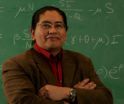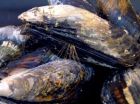(Press-News.org) Scientists around the world have crossed a threshold into a promising and challenging new era in the quest for fusion energy. So says physicist George "Hutch" Neilson, director of advanced projects at the U.S. Department of Energy's Princeton Plasma Physics Laboratory, in remarks prepared for the 2013 annual meeting of the American Association for the Advancement of Science in Boston.
The new phase has begun with the construction of ITER, a fusion facility of unprecedented size and power that the European Union, the United States and five other countries are building in France. Plans call for ITER to produce 500 million watts of fusion power for some 300 second during the 2020s. With construction of ITER under way, many national fusion programs "are embarking on their own projects to demonstrate the production of electricity from fusion energy," Neilson said.
These nations are considering "DEMO" programs that would mark the final step before the construction of commercial fusion facilities by midcentury. Such programs have brought worldwide researchers together to discuss common challenges in annual workshops that the International Atomic Energy Agency began sponsoring last year. "The scientific and technical issues for fusion are well known," said Neilson, "but the search for solutions is extremely challenging."
The key issues:
Development of computer codes to guide the design of DEMO plants.
Development of material for the interior of the plants.
Methods for extracting fusion power.
Methods for handling the exhaust from fusion reactions.
Requirements for devices to develop DEMO components.
Individual countries are exploring their own paths to a DEMO, based on their perceived need for such energy. All such plans remain tentative and subject to government approval.
A look at the possible roadmaps that countries are considering:
China—The world's most populous nation is pushing ahead with plans for a device called China's Fusion Engineering Test Reactor (CFETR) that would develop the technology for a demonstration fusion power plant. Construction of the CFETR could start around 2020 and be followed by operation of a DEMO in the 2030s.
Europe and Japan—These programs are jointly building a powerful tokamak called JT-60SA in Naka, Japan, as a complement to ITER. Plans call for construction to be completed in 2019. The Japanese and Europeans will then pursue similar but independent timelines. Both could start engineering design work on a DEMO around 2030, following the achievement of ITER milestones, and placing the DEMO in operation in the 2030s.
India—The country could begin building a device called SST-2 to develop components for a DEMO around 2027. India could start construction of a DEMO in 2037.
Korea—The program plans to build a machine that it calls K-DEMO that would develop components in the first phase, called K-DEMO-1, and utilize the components in the second phase, or K-DEMO 2. Construction could commence in the mid-to-late 2020s, with operations starting in the mid-2030s.
Russia—The country plans to develop a fusion neutron source (FNS), a facility that would produce neutrons, the chief form of energy created by fusion reactions, in preparation for a DEMO. The FNS project is part of a Russian commercial development strategy that runs to 2050.
United States—A next-step Fusion Nuclear Science Facility (FNSF) is under consideration. It would be used to investigate materials properties under fusion conditions, and develop components for a DEMO. Construction of the FNSF could start in the 2020s.
### END
Previewing the next steps on the path to a magnetic fusion power plant
A PPPL physicist details the roadmap and challenges ahead
2013-02-16
ELSE PRESS RELEASES FROM THIS DATE:
Mentoring models to move minorities to majorities in STEM
2013-02-16
Evidence of a shift in U.S. demographics and importance of minorities took center stage during the Presidential election, but how do those growing toward majority acquire representation in our educational and technological communities?
Accelerating programs that mentor and move minorities forward to majorities in science, technology, engineering and math (STEM) is one method that is gaining traction, said Castillo-Chavez, one of a trio of Presidential Award for Excellence in Science, Engineering and Mathematics (PAESMEM) Mentors speaking at the American Association for ...
Strengthening speech networks to treat aphasia
2013-02-16
PROVIDENCE, R.I. [Brown University] — Aphasia, an impairment in speaking and understanding language after a stroke, is frustrating both for victims and their loved ones. In two talks Saturday, Feb. 16, 2013, at the conference of the American Association for the Advancement of Science in Boston, Sheila Blumstein, the Albert D. Mead Professor of Cognitive, Linguistic, and Psychological Sciences at Brown University, will describe how she has been translating decades of brain science research into a potential therapy for improving speech production in these patients. Blumstein ...
When good habits go bad
2013-02-16
BOSTON, MA -- Learning, memory and habits are encoded in the strength of connections between neurons in the brain, the synapses. These connections aren't meant to be fixed, they're changeable, or plastic.
Duke University neurologist and neuroscientist Nicole Calakos studies what happens when those connections aren't as adaptable as they should be in the basal ganglia, the brain's "command center" for turning information into actions.
"The basal ganglia is the part of the brain that drives the car when you're not thinking too hard about it," Calakos said. It's also ...
Mussels cramped by environmental factors
2013-02-16
The fibrous threads helping mussels stay anchored – in spite of waves that sometimes pound the shore with a force equivalent to a jet liner flying at 600 miles per hour – are more prone to snap when ocean temperatures climb higher than normal.
At the American Association for the Advancement of Science meeting in Boston, Emily Carrington, a University of Washington professor of biology, reported that the fibrous threads she calls "nature's bungee cords" become 60 percent weaker in water that was 15 degrees F (7 C) above typical summer temperatures where the mussels were ...
Mussel-inspired 'glue' for surgical repair and cancer drug delivery
2013-02-16
When it comes to sticking power under wet conditions, marine mussels are hard to beat. They can adhere to virtually all inorganic and organic surfaces, sustaining their tenacious bonds in saltwater, including turbulent tidal environments.
Northwestern University's Phillip B. Messersmith will discuss his research in a talk titled "Mussel-Inspired Materials for Surgical Repair and Drug Delivery" at the American Association for the Advancement of Science (AAAS) annual meeting in Boston. His presentation is part of the symposium "Translation of Mussel Adhesion to Beneficial ...
Using transportation data to predict pandemics
2013-02-16
In a world of increasing global connections, predicting the spread of infectious diseases is more complicated than ever. Pandemics no longer follow the patterns they did centuries ago, when diseases swept through populations town by town; instead, they spread quickly and seemingly at random, spurred by the interactions of 3 billion air travelers per year.
A computational model developed by Northwestern University's Dirk Brockmann could provide better insight into how today's diseases might strike. Brockmann, an associate professor of engineering sciences and applied mathematics ...
Historic legacy of lead pollution persists despite regulatory efforts
2013-02-16
Efforts to reduce lead pollution have paid off in many ways, yet the problem persists and will probably continue to affect the health of people and animals well into the future, according to experts speaking at the annual meeting of the American Association for the Advancement of Science (AAAS) in Boston.
"Things have substantially improved with the virtual elimination of leaded gasoline, restrictions on lead paint, and other efforts to limit releases of industrial lead into the environment. But the historic legacy of lead pollution persists, and new inputs of industrial ...
Studying networks to help women succeed in science
2013-02-16
For women in science and research, finding a network of colleagues in their specialized area might be difficult: relevant researchers and activists can be spread across generations, cultures and continents. Finding a mentor within this group proves particularly difficult for young women and minorities.
Northwestern University's Noshir Contractor will discuss his network research in a presentation titled "Understanding and Enabling Networks Among Women's Groups in Sustainable Development" at the American Association for the Advancement of Science (AAAS) annual meeting ...
Teaching the brain to speak again
2013-02-16
Cynthia Thompson, a world-renowned researcher on stroke and brain damage, will discuss her groundbreaking research on aphasia and the neurolinguistic systems it affects Feb. 16 at the annual meeting of the American Association for the Advancement of Science (AAAS). An estimated one million Americans suffer from aphasia, affecting their ability to understand and/or produce spoken and/or written language.
Thompson, Northwestern's Ralph and Jean Sundin Professor of Communication Sciences, will participate in a 10 a.m. media briefing on "Tools for Regaining Speech" in Room ...
Modern life may cause sun exposure, skin pigmentation mismatch
2013-02-16
UNIVERSITY PARK, Pa. -- As people move more often and become more urbanized, skin color -- an adaptation that took hundreds of thousands of years to develop in humans -- may lose some of its evolutionary advantage, according to a Penn State anthropologist.
About 2 million years ago, permanent dark skin color imparted by the pigment -- melanin -- began to evolve in humans to regulate the body's reaction to ultraviolet rays from the sun, said Nina Jablonski, Distinguished Professor of Anthropology.
Melanin helped humans maintain the delicate balance between too much ...
LAST 30 PRESS RELEASES:
Strategic river sensors could have forewarned of Texas Camp flood disaster
Drone sampling of whale breath reveals first evidence of potentially deadly virus in Arctic
Roman soldiers defending Hadrian’s Wall infected by parasites, study finds
Pinochet’s prisoners were tormented with music but still found solace in it, a new book reveals
Fertility remains high in rural Tanzania despite access to family planning
AI-assisted device can improve autism care access
Kinetic careers
Uncovering how parasitic plants avoid attacking themselves to improve crop resistance
Nanoparticle vaccine strategy could protect against Ebola and other deadly filoviruses
Study finds brain care score can predict risk of stroke across racial groups
Key lung immune cells can intensify allergic reactions
Do hormones explain why women experience more gut pain?
New materials conduct ions in solids as easily as in liquids
Breakthrough of the Year: Renewable energy begins to eclipse fossil fuel-based sources
LLM use is reshaping scientific enterprise by increasing output, reducing quality and more
Introducing LightGen, a chip for ultra-fast, ultra-efficient generative AI
Astronomers see fireworks from violent collisions around nearby star
ACC/AHA issue new guideline on managing congenital heart disease in adults
Cosmic crash caught on camera
Is talented youth nurtured the wrong way? New study shows: top performers develop differently than assumed
Ants: An untapped resource in the development of antibiotics?
Archaeologists use AI to create prehistoric video game
Mitochondria migrate toward the cell membrane in response to high glucose levels
Tiny viral switch offers hope against drug-resistant bacteria
Most parents aware of early peanut introduction guidelines, but confused about details
HPV vaccine can protect against severe lesions of the vulva and vagina
Virtual care provision and emergency department use among children and youth
Quadrivalent HPV vaccine and high-grade vulvovaginal lesions
Insights into dry eyes gained from stem cell-derived tear glands
Researchers identify 166 human pluripotent stem cell lines available for use in clinical applications
[Press-News.org] Previewing the next steps on the path to a magnetic fusion power plantA PPPL physicist details the roadmap and challenges ahead


